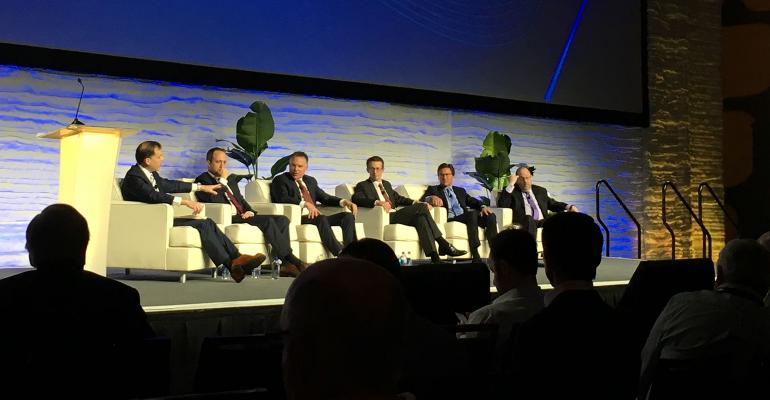As the high fees and underperformance of active funds have directed a lot of money toward passive strategies, many have predicted the death of active management. But factor investing is spurring a revival of active investing, said asset managers speaking at the Inside ETFs conference in Hollywood, Fla. Tuesday morning.
Factor investing, which highlights the benefits of using low volatility, momentum, quality, size, value and yield selection criteria, has gained acceptance in recent years and is used by many advisors. According to a recent Invesco survey of retail and institutional investors, six in 10 investors want to increase their factor allocation in the future.
Multi factor funds are a great way to get low-cost active exposure, said Francis Kinniry, global head of portfolio construction, investment strategy group at Vanguard.
Factor investing will level the debate on active versus passive, he added. There’s $11 trillion in high-cost active products just waiting to get picked off by low-cost factor funds.
“Everybody in this room is a factor investor, regardless of how you implement it,” said Mark Carver, executive director and global head of factor index products at MSCI.
Vincent de Martel, global solutions strategist at Invesco, agrees that assets are leaving active funds for factor funds, but money assets are also coming the other way; a lot of investors are leaving market-cap weighted ETFs to allocate to factors. This way, they maintain the transparency from the ETF structure but gain the opportunity to capture additional premium that can come from factors.
Theodore Lucas, head of investment strategies and solutions at Hartford Funds, said we’re still in the early days in terms of adoption of factor investing. Last year, there was an acceleration in terms of the asset flows to these products. But the next stage is going under the hood of these products; advisors should understand how certain products express the factors, as there are nuances in how they do so. For instance, there are 25 commonly accepted valuation measures.
He added a word of caution: Despite the name of the fund (i.e., value), there may be negative exposures to other factors that advisors or investors don’t know about.
“Generally speaking, if you were to take just the S&P or Russell index and give it a value tilt, what you see is you get value exposure, but very frequently you will have negative exposure to, say, quality,” Lucas said. “By the act of being short some of these other factors, particularly momentum and quality to some extent and low volatility, basically investors get clipped on both sides of the trade.”
Be aware of the residual exposures that aren’t named in the fund, he added.
Ed Rosenberg, head of ETFs at American Century Investments, voiced the same warning. People pay attention to the consequences they’re looking for, not the unintended consequences, and those have the potential to drive your portfolio much more than intended. When you invest in a value fund, is there more high volatility than you expected? In a momentum fund, how is that factor being accomplished? It could be price movement; it could be earnings revisions.





